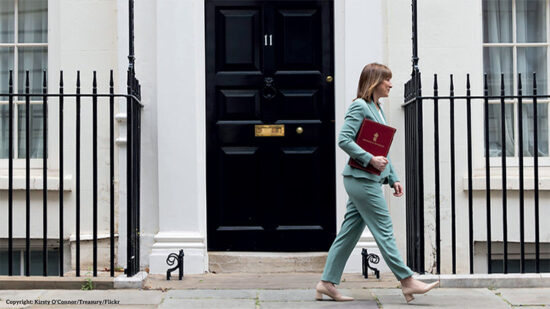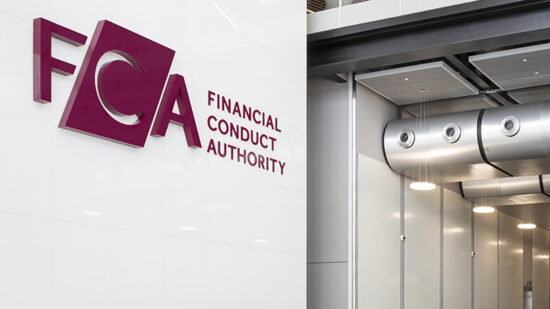Sterling
Sterling finished last week on its highest levels since mid May as encouraging data added to the feel good factor after ECB President Draghi announced the latest programme to save the Euro. Investors are gradually starting to unwind risk adverse positions and Sterling could be a beneficiary, especially against the Euro.
While the data releases last week were encouraging, they will probably be overshadowed by the news from the ECB and their new debt buying programme. Investors have been concerned by the financial problems in Europe for some time, and while the latest announcement may not be that panacea that the market wanted, it does buy time for European governments to get their houses in order. Given this there may be a move back into riskier assets, of which the Euro would be one, and Sterling may benefit by default as investors lighten up on US dollars. Sterling is approaching the 1.60 level for the first time in over 3 months, and a push through this could see an initial test of 1.6060 and then an eventual move to 1.63 which was the year’s high seen in May. Against the Euro, any move away from the US dollar will benefit the Euro more than Sterling so a gradual fall in Sterling/Euro could be seen.
We look for higher Sterling versus the US dollar and a gradual fall against the Euro.
US dollar
The US dollar lost some of its gloss last week as investors gave a guarded thumbs up to the ECB Bond buying programme and investors moved out of safe haven currencies. Figures were mixed, with the main release of the month, the Non-Farm Payrolls coming slightly below estimates. Manufacturing was weak, down from an earlier flash estimate of 51.9 and signalled only a modest improvement in business conditions. It was one of the lowest readings since the manufacturing recovery was first indicated in October 2009. The manufacturing release from Institute of Supply Management also gave a poor reading, slipping further below the 50 level. Construction spending fell across the board in July, with steep declines in private outlays. Private construction dropped 1.2 percent, also the largest decline since July last year.
After a long period of strength, mainly on the back of safe haven buying, the dollar could lose ground in the months ahead as Europe gets to grips with their financial problems and the US goes to the polls, and the debt ceiling issue comes back in the limelight. We looks for Sterling to break through 1.60 and Eur/Usd to head higher towards 1.2750.
Euro
Last week was all about the ECB Press Conference on Thursday, and what new measures President Mario Draghi would announce to help save the Euro. Would it be good enough to live up to the ‘’I’ll do all it takes to save the Euro’’ comments he made in early August? With all this doom and gloom, great things were expected from Mr Draghi, and super Mario tried his best to deliver.
The question is, has Mr Draghi done enough to convince investors that the Euro is here to stay and that the ECB will use all available means to stabilise bond markets?
One thing it has done is bought more time for European governments to get their acts in order. They still need to shore up the banking system, curb ballooning debt and fix chronic imbalances over the 17 strong bloc. Some European governments have been reluctant to ask for a bailout fearing the conditions attached would be too onerous, so it’s now up to them to bite the bullet and find out what conditions will be required. This programme goes further than the previous two and is unlimited. It concentrates on shorter dated maturities but it will be hoped that within three years government debt will be in a better place. We feel the markets will give the programme the benefit of the doubt in the short term, as they have on previous occasions. It feels that investors are growing tired of the Euros problems, and are looking to get back to fundamentals.
The Euro has been oversold for some months now, so a continued unwinding of these short positions could continue for a while longer. We look for a higher Eur/Usd in the week ahead, and a lower Eur/GBP
New Zealand Dollar
The Kiwi finished last week more or less unchanged against the Usd but weakened considerably against Sterling to trade above 2.00 for the first time in over three months. It pulled back late last week on a combination of slightly higher commodity prices and a firming stock market precipitated by the new bond buying programme from the ECB. Figures were thin on the ground, with the only one of note being the Overseas Trade Index falling more than expected. This was mainly caused by a fall in dairy export prices and a rise in petroleum import prices.
On balance we see further weakness in the NZD versus Sterling, but the currency should hold its own and maybe improve slightly against the US dollar as risk comes back into vogue.
Australian Dollar
The Aussie dollar arrested its recent slide last week as the Reserve Bank of Australia kept interest rates on hold and remarked that the domestic economy was weathering the global slow down quite well. Although no change was expected, the tone of the statement was more bullish than expected and promoted traders to reduce bets the RBA would cut interest rates again this year. The currency was not helped by separate news that growth in the nation slowed more than forecast in the second quarter. Australia’s gross domestic product advanced 0.6% in the second quarter from the previous three months, when it rose a revised 1.4%, a Bureau of Statistics report released last Wednesday showed. The result compared with the median estimate for a 0.7% gain. With the AIG Purchasing Managers’ index showing another poor month at 45.3 – albeit a marked improvement from July, Q3 may also only see sluggish growth and may yet change the RBA’s mind on interest rates.
This week’s data is pretty thin and shouldn’t move the market; as such we expect further consolidation on GBP/AUD around the mid A$1.50’s with the Aussie potentially strengthening should global risk appetite pick up. However, at this point a move to A$1.6000 would seem more likely than a return to sub A$1.5000 prices in the near term.
Canadian Dollar
For the usually docile Canadian dollar, last week was quite volatile, with over 1 month highs against Sterling and a bout of weakness early in the week against the US dollar being sharply reversed late on to test 4 month highs. The initial move up was caused by comments from Bank of Canada Governor Mark Carney, who said ‘some modest withdrawal of the present considerable monetary policy stimulus may become appropriate’. The Central bank left rates unchanged at 1%, where they have been for 2 years and maintained its mild tightening bias. Carney said that the Canadian economy remains near its production potential and prices for exported commodities have increased since July despite a slower global momentum. He said exports would not return to levels seen before the last recession until 2014, citing in part the CAD’s persistent strength.
We see CAD strength against the USD, and a break of 0.9805 could lead to a test of 0.9725, the 1 year low, while GBP/CAD could push towards 1.5800 in the short term.
Chinese Yuan
The USD/CNY rate remained broadly stable last week, trading from 6.3400 to 6.3550, with the fluctuations largely caused by speculation about the contents of yesterday’s ECB press conference and subsequently the reaction to it. Tuesday into Wednesday saw the largest move with the yuan deprecating to the top of the range, before falling back on speculation the European Central Bank would unveil a satisfactory bond-buying plan to address the sovereign-debt crisis in the euro region. ECB President Mario Draghi’s announcement of proposals that include unlimited purchases of government debt to help cap borrowing costs were not enough to satisfy euro buyers, but did boost risk appetite and saw the yuan make some small gains. Twelve-month non-deliverable forwards were little changed at 6.4380, a 1.5% discount to the spot rate in Shanghai, according to data compiled by Bloomberg. One-month implied volatility, a measure of exchange-rate swings used to price options, declined five basis points, or 0.05 percentage point, to 1.35% as the recent stability in the rate continues.
There’s still no reason for the PBOC to allow the yuan to appreciate versus the dollar in the near term, particularly if the EUR/USD rate falls back, so expect 6.3400 to remain as the floor.
Japanese Yen
The yen, much like the other major currencies was having a very quiet week in the build up to last week’s European Central Bank meeting, trading in a narrow range from 124.00 to 124.60 by and large; however, the result of Sig. Draghi’s speech was some softness in the euro, but overall a pick-up in risk appetite. The ECB’s bond buying program may not go far enough for some, but the positive action was sufficient to convince investors to seek yields on growth linked assets. The USD/JPY rate followed a similar pattern, trading from 78.25 to 78.50 through the week before pushing above 79.00 yesterday afternoon.
Although the calendar for this week is quite heavy, movement will be dictated by risk appetite more than anything else. GBP/JPY may test higher, particularly if the pound can make gains versus the US dollar, but there is resistance at 126.00 first. USD/JPY should remain torpid between 78.50 and 79.50.
South African Rand
The GBP/ZAR rate traded in a fairly narrow band through last week as the markets waited for last week’s ECB press conference. Although Sig. Draghi’s statement did little for the euro itself, it was deemed positive for the commodity currencies and risk in general, which in turn led to modest gains for the rand against both he pound and US dollar.
The GBP/ZAR rate this week will depend heavily on risk appetite and the fate of the euro. The rand made some gains at the tail end of last week, but may not be able to sustain them if the euro remains on the back foot. Expect another test of resistance at R13.40 at some stage.
For more currency data and information on how to assist your clients with their international money transfers, please visit the International Adviser Currency Zone powered by Moneycorp.








